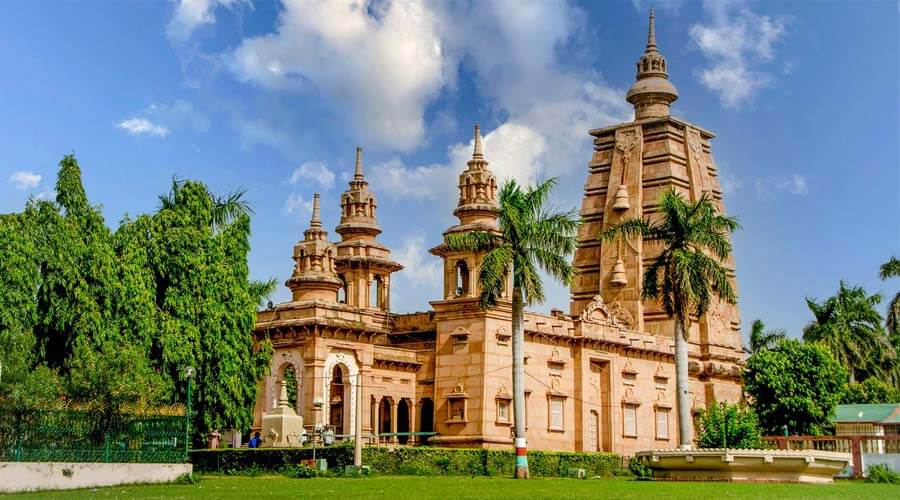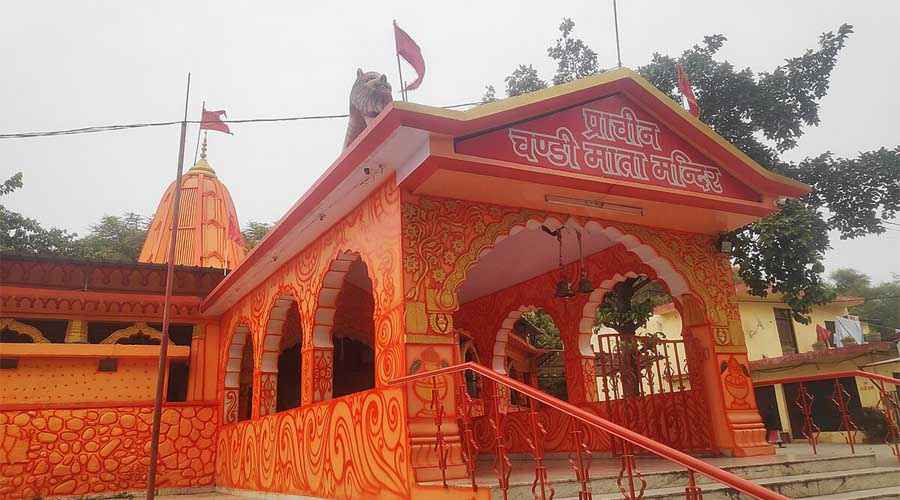Sarnath Buddha Temple in Varanasi is one of the most significant and historic Buddhist pilgrimage sites in India, renowned as the place where Lord Buddha gave his first sermon after attaining enlightenment. Situated about 10 kilometers from the city of Varanasi, Uttar Pradesh, Sarnath holds immense spiritual, historical, and cultural importance. It marks the founding of the Buddhist Sangha and the dissemination of Buddha’s core teachings, including the Four Noble Truths and the Eightfold Path.
History of Sarnath Buddha Temple
Also known as Isipatana, Sarnath is where Siddhartha Gautama—the Buddha—first taught after his enlightenment under the Bodhi Tree in Bodh Gaya. This event, called the “Dhammacakkappavattana Sutta” or “Turning of the Wheel of Dharma,” took place around the 5th century BCE and led to the establishment of Buddhism as a distinct spiritual tradition.
Over centuries, many monuments and stupas were constructed here, most notably the Mauryan-era Dhamek Stupa, which enshrines the spot of Buddha’s first sermon. The site features ruins of monasteries, shrines, and the famous Ashoka Pillar topped with the Lion Capital, which became India’s national emblem.
Sarnath was a flourishing center of Buddhist study and art, attracting monks and pilgrims from across Asia. The Mulagandha Kuti Vihar today displays beautiful frescoes depicting Buddha’s life, often considered one of the finest examples of Buddhist art. The archaeological remains and museums preserve relics and sculptures that narrate Buddhism’s evolution and cultural heritage.
Key Attractions and Architecture
- Dhamek Stupa: A massive stone structure built on the purported site of Buddha’s first sermon. It dates back to 500 CE and stands 43.6 meters tall.
- Mulagandha Kuti Vihar: A modern temple known for its exquisite frescoes and meditative ambiance.
- Ashoka Pillar: Erected by Emperor Ashoka in the 3rd century BCE, featuring the iconic Lion Capital.
- Chaukhandi Stupa: The octagonal stupa believed to mark the spot where Buddha met his first disciples.
- Sarnath Archaeological Museum: Holds a rich collection of Buddhist artifacts, including sculptures and relics from ancient times.
Timings and Visiting Hours
Sarnath is open to visitors daily, allowing ample time for spiritual and historical exploration.
- Sarnath Temple and Dhamek Stupa: 6:00 AM to 6:00 PM
- Mulagandha Kuti Vihar: 6:00 AM to 7:00 PM
- Sarnath Archaeological Museum: 9:00 AM to 5:00 PM; closed on Fridays
- Sarnath Archaeological Site: Open from sunrise to sunset
These timings enable early morning visitors to experience serene meditation and reflection as the sun rises, while evenings often feature rituals and chanting. The light and sound show in the evening (around 6:30 PM) brings Buddha’s story and the cultural richness of Sarnath vividly to life, with tickets costing around INR 200-250.
Tickets and Entry Fees
- Entrance fee for the Sarnath archaeological site is approximately INR 5 per person.
- The Sarnath Archaeological Museum charges around INR 5 for Indian visitors and INR 100 for foreigners.
- Children below 15 years usually have free entry.
- The light and sound show tickets cost about INR 200-250.
Guided tours and audio guides are often available to enhance the experience, providing rich context to the historical sites.
How to Reach Sarnath Buddha Temple
- By Road: Sarnath is approximately a 30-minute drive from Varanasi city center with good road connectivity. Taxis, auto-rickshaws, and buses are available.
- By Train: Varanasi Junction is the nearest major railway station, located about 12 kilometers from Sarnath.
- By Air: The nearest airport is Lal Bahadur Shastri International Airport (Varanasi Airport), which connects Sarnath to major cities in India and abroad.
Spiritual and Cultural Importance
Sarnath is revered as one of the eight most important Buddhist pilgrimage sites globally, representing the moment Buddhism began spreading its teachings. The tranquil gardens, stupas, and temples offer pilgrims and tourists alike an atmosphere conducive to meditation, learning, and cultural appreciation.
The temple grounds and adjacent archaeological sites often host festivals and rituals that showcase Buddhist traditions and art forms, enhancing the cultural vibrancy of the region.
This comprehensive overview highlights Sarnath Buddha Temple in Varanasi as a prime destination for spiritual seekers, history enthusiasts, and travelers eager to witness the roots of Buddhism through its ancient monuments, serene temples, and vibrant heritage. Planning a visit within the stipulated timings, with the modest ticketing, can ensure a spiritually enriching and historically insightful experience.


